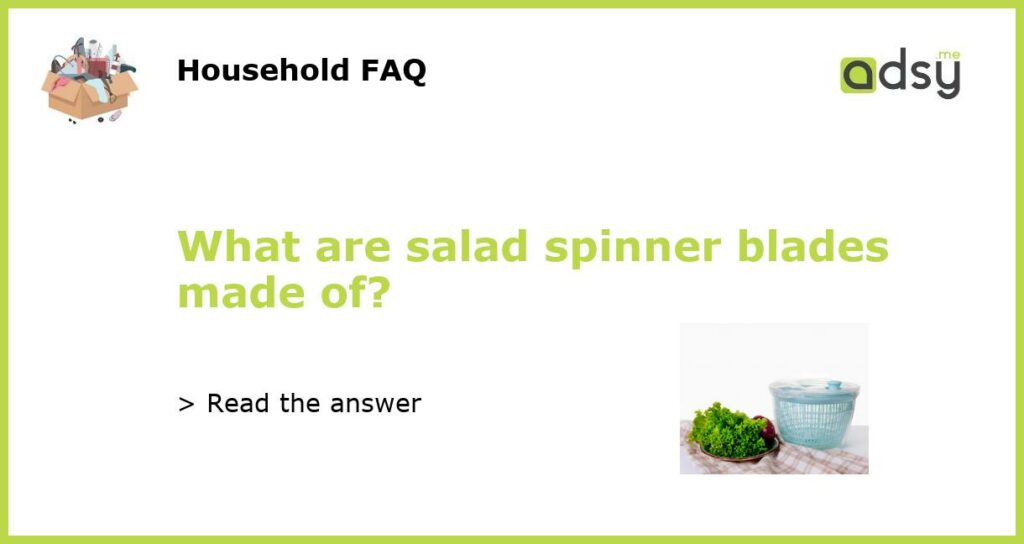The Purpose and Design of Salad Spinner Blades
Salad spinner blades play a crucial role in the functioning of a salad spinner, which is a kitchen tool used to wash and dry salad greens. The spinning action created by the blades helps to remove excess water from the greens, making them crisp and ready to be used in a salad. The design of the blades is specifically crafted to achieve this objective efficiently.
Common Materials Used for Salad Spinner Blades
There are several materials that salad spinner blades are commonly made of. The choice of material often depends on factors such as durability, food-contact safety, and ease of cleaning. Here are some of the most common materials used:
a. Plastic: Many salad spinner blades are made of plastic, specifically food-grade polypropylene. Plastic blades are lightweight, easy to clean, and relatively inexpensive to produce. They are also BPA-free, making them a safe choice for food preparation. However, plastic blades may not be as durable as those made from other materials, and over time, they may become prone to breakage or wear.
b. Stainless Steel: Stainless steel is another popular material used for salad spinner blades. This material is known for its durability and resistance to rust and corrosion, making it a suitable choice for kitchen tools. Stainless steel blades are more robust than plastic blades and can withstand regular use without breaking. However, they may be more expensive and heavier than plastic blades.
c. Silicone: Some salad spinner blades are made of silicone, which is a flexible and heat-resistant material. Silicone blades are gentle on delicate greens and can effectively remove water without damaging them. Additionally, silicone is non-toxic and easy to clean. However, silicone blades may not be as durable as those made from other materials and may wear out over time.
Factors to Consider When Choosing Salad Spinner Blades
When choosing salad spinner blades, there are several factors to consider:
a. Durability: If you plan to use your salad spinner frequently, opting for blades made of a durable material like stainless steel may be a good choice to ensure they withstand regular use and last for a long time.
b. Food-contact Safety: It is important to make sure that the blades are made of food-grade materials, such as BPA-free plastic or stainless steel, to ensure that no harmful substances leach into the food during the spinning process.
c. Ease of Cleaning: Consider how easy it is to clean the blades. Blades made of smooth materials, like plastic or stainless steel, are often easier to clean compared to those made of silicone, which can trap debris or become stained over time.
Maintaining and Cleaning Salad Spinner Blades
To keep salad spinner blades in good condition and ensure their longevity, it is important to maintain and clean them properly.
a. Hand Washing: Most salad spinner blades are not dishwasher-safe and should be hand-washed. Before washing, remove the blades from the spinner and wash them with warm, soapy water. Use a brush or sponge to remove any food particles or residue. Rinse thoroughly and dry them completely before storing.
b. Avoiding Harsh Cleaners: Avoid using harsh cleaners or abrasive scrubbers on the blades, as they can scratch or damage the surface. Stick to mild dish soap and non-abrasive cleaning tools to avoid compromising the blades’ integrity.
Replacing Salad Spinner Blades
Over time, salad spinner blades may become worn out or damaged. If you find that your blades are no longer functioning effectively or are showing signs of wear, it may be necessary to replace them. Refer to the manufacturer’s guidelines for information on where to purchase replacement blades specific to your salad spinner model. Following the provided instructions, carefully remove the old blades and install the new ones to ensure they fit securely and function properly.






